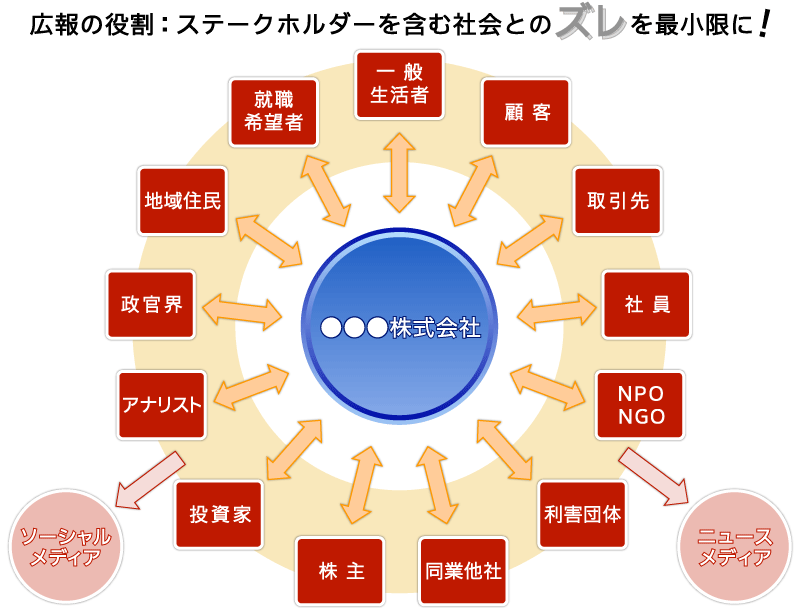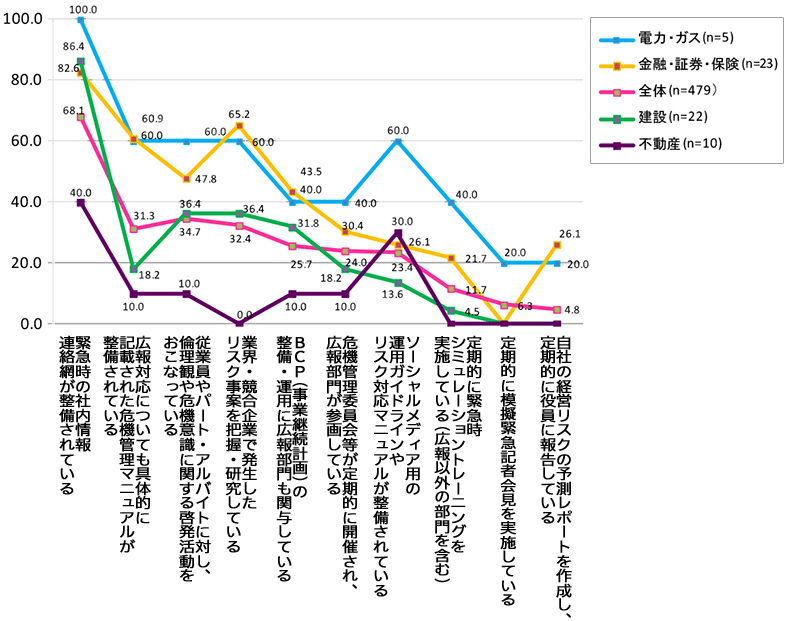Incidents and accidents strike companies without warning. Wherever people gather (within companies), crises inevitably occur.
Looking at the number of "crisis management × public relations" reports in newspapers and magazines throughout 2013, it increased to about 24,000 cases—1.7 times the number from 10 years prior in 2003. Beginning with the January terrorist attack in Algeria, crises struck companies without warning: problems with the latest passenger aircraft, factory explosions, food fraud, issues with anti-social forces, pesticide contamination incidents, and even careless SNS posts on social media by part-time workers. Each time, the critical question was "crisis management public relations capability."
In this second installment, we will discuss crisis management communication capabilities based on our institute's "First Survey on Corporate Public Relations Activities," conducted among 479 listed Japanese companies.
■ Are You Out of Step with the World?
For many years, we have analyzed cases where companies failed in crisis management communications, damaged their corporate reputation, and consequently saw a decline in corporate value.
Through this analysis, we have categorized failure patterns in emergency communications into the following five types:
① Speculation/Conjecture (Disclosing unconfirmed information during apology press conferences, etc., leading to confusion)
② Downplaying the Issue (Criticism for statements or actions attempting to minimize the situation)
③ Slow Response (Delays in addressing the situation or disclosing information become further grounds for criticism)
④ Safety and Security (Discrepancy between technical safety and public anxiety)
⑤ Disrespectful Attitude (Distrust stemming from non-verbal cues like the speaker's facial expressions or demeanor)
The root cause of failures in public relations, especially in initial responses, lies not so much in communication techniques, but in the disconnect between the stance of corporate executives toward the incident, accident, or scandal and the perceptions of the media and the public.

In this PR capability survey, out of 80 questions, a panel of PR experts (researchers, media professionals, PR practitioners) pre-selected three questions they considered most important for each of the "8 PR Capabilities" ( see Part 1 of this series ). These selected questions were given additional weight in the analysis. Among the crisis management questions, the panel emphasized "Crisis management committees are held regularly, with the PR department participating." However, only 24.0% of companies actually practice this (Figure 1), highlighting it as an area needing improvement. Visiting companies individually revealed comments like, "The PR department isn't part of crisis management," or "Crisis management committees aren't held regularly at all. They're just a formality." Without accurate internal information, external communications during emergencies tend to become insular logic that diverges from the public's perception, such as "speculation and conjecture" or "reactive responses." It is crucial for the PR section to firmly engage with the core management, like the crisis management committee, to minimize this disconnect between the company and the public.
■ Reduce the gap.
Another effective measure to reduce this "disconnect" is "manual development" and "simulation training" based on those manuals. This is a highly effective means of systematically enhancing risk awareness throughout the organization.
This survey also included questions regarding manual development, such as "A crisis management manual with specific provisions for PR responses is established" and "The PR department is involved in the development and operation of BCP (Business Continuity Plan)." Around 30% of companies reported having implemented these (Figure 1). While this implementation rate is somewhat concerning for listed companies, what is even more alarming is the low implementation rate of around 10% for simulation training items such as "regularly conducting emergency simulation training" and "regularly conducting simulated emergency press conferences."
The higher bar set by the "regularly" requirement may have made these questions challenging. However, corporate management structures change almost yearly, and the products and services companies handle evolve. Stakeholders like business partners also continue to change. Given this, regular training seems essential.
Figure 1: Crisis Management Capability - 10 Questions
■ Prevent Crises Before They Happen! Issue Management
However, even more critical than this emergency response capability is "crisis management capability during normal times."
This involves anticipating, predicting, and avoiding risks that could impact corporate management—an area also known as "issue management." To manage this domain, B2C companies in particular have been increasingly building systems and structures for "social listening," which involves monitoring platforms like Twitter and 2channel.
While it is an extremely effective means of capturing the beginnings of issues customers perceive, such as opinions about the company's products or services or minor concerns, adoption has only reached a penetration rate of 18.2% in this survey.
Another effective measure for routine crisis management is the "outside director/advisory board" system. Discussions are currently underway to amend the Companies Act, aiming to enhance corporate governance, with a focus on strengthening the outside director system.
As its importance grows as a global investment decision metric, even companies led by Keidanren chairmen—who were previously cautious about this system—are accelerating its adoption, making corporate response an urgent priority.
In this survey, the question "Has the company established a system of outside directors, including external experts, or an advisory board?" was included under the eighth PR capability ( see Part 1 of this series ), "PR Organizational Capability." Only 15.0% of all companies and 20.5% of Tokyo Stock Exchange First Section companies reported having such a system in place. According to the Tokyo Stock Exchange, as of August last year, 62.3% of First Section listed companies had appointed outside directors, and 46.9% had appointed independent outside directors. This indicates a discrepancy between these figures and the survey results. While differing respondent attributes may be a factor, it's also possible that companies that have introduced the system but have not appointed outside directors who can realistically be considered "independent" answered "not introduced." Looking at industry trends for this question, the "Food Products" industry ranked first at 40.0%, double the TSE First Section average, likely due to heightened awareness regarding products that directly enter people's mouths.
■ Building Mechanisms to Reflect Society's Voice in Management
The public relations department must consider it a key mission not only to enhance its "information dissemination capabilities" but also to develop "information gathering capabilities" and "information analysis capabilities" to efficiently collect valuable external "voices" as a window and point of contact with society, and to create mechanisms to reflect these in management decisions.
Crisis management capability, an applied aspect of public relations, is an extremely important skill in the era of global competition. We hope companies will use this survey as a basis for review and work to enhance their crisis management capabilities.
About the Corporate Communication Strategic Studies Institute
The Corporate Communication Strategic Studies Institute (CSI) is a research organization within Dentsu Inc. Public Relations. It collaborates with experts in corporate management and public relations (including university professors and researchers) to conduct surveys, analysis, and research on corporate communication strategies and systems.





